The Trouble With Harry (1955)
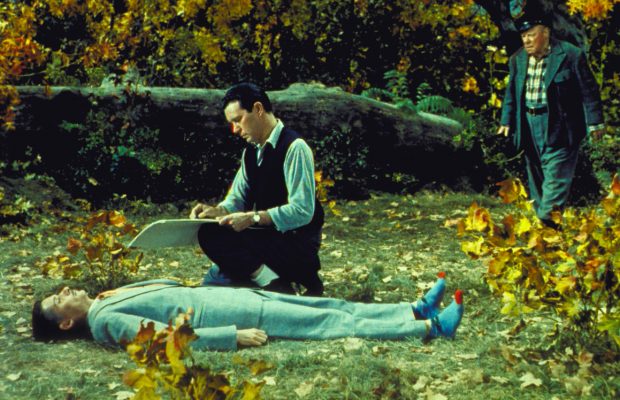
Toronto Film Society presented The Trouble With Harry (1955) on Sunday, January 19, 2020 in a double bill with Rope as part of the Season 72 Sunday Afternoon Film Buffs Series, Programme 4.
Production Company: Alfred J. Hitchcock Productions. Producer (uncredited): Alfred Hitchcock. Associate Producer: Herbert Coleman. Director: Alfred Hitchcock. Screenplay: John Michael Hayes, based on the novel by Jack Trevor Story. Music: Bernard Herrmann. Cinematography: Robert Burks. Editor: Alma Macrorie. Art Direction: John B. Goodman, Hal Pereira. Set Decoration: Sam Comer, Emile Kuri. Costumes: Edith Head. Release Date: October 3, 1955.
Cast: Edmund Gwenn (Capt. Albert Wiles), John Forsythe (Sam Marlowe), Mildred Natwick (Miss Ivy Gravely), Mildred Dunnock (Mrs. Wiggs), Jerry Mathers (Arnie Rogers), Royal Dano (Deputy Sheriff Calvin Wiggs), Parker Fennelly (Millionaire), Barry Macollum (Tramp), Dwight Marfield (Dr. Greenbow), Shirley MacLaine (Jennifer Rogers).
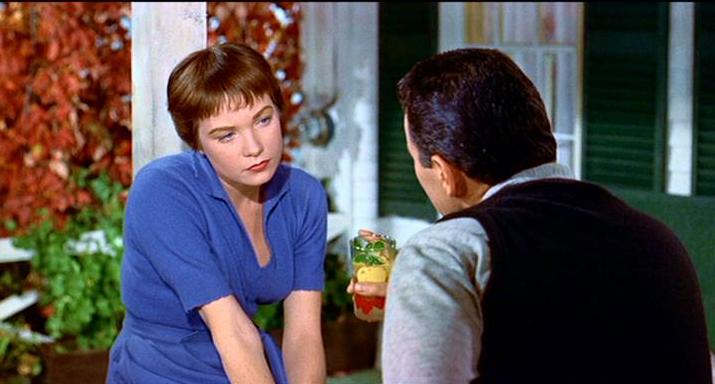
It’s hard to imagine a more Hitchcockian film than The Trouble With Harry. A killing set in the pastoral idyll of Vermont in fall; a cast full of decent folk with the capacity for murder. A corpse that reveals the true nature of everyone who encounters it. Were it not a comedy, Harry might blur into margins of the Hitchcock canon. But of course, that’s what makes it memorable. Harry, the dead man, allegedly arrived in the hamlet of Highwater, Vermont, in search of his wife. Upon departing her company, in an agitated and compromised state, he wandered into the woods and met his end. Harry’s connections to the town and its people are otherwise nil. But those people are deeply connected to one another. As his death impacts one, so it begins to impact others, in various ways.
“I prefer ‘murder by the babbling brook,’” Hitchcock later said. “You’ve got some idea of that in The Trouble With Harry. Where did I lay the dead body? Among the most beautiful colors I could find…. I wanted to take a nasty taste away by making the setting beautiful.”[1] Harry is indeed one of the director’s lushest films, opening with splendid location shots of rolling hills and flame-hued autumn leaves. The vibrancy extends to wardrobe, from the dead man’s plucky-coloured socks (light blue with bright red toes, often thrust into the foreground), to Shirley MacLaine’s dress, made of a fabric so ultramarine that it almost competes with the woman herself. Amidst all this splendor, a terrible crime has been committed. Who’s the killer? Though Hitchcock once claimed he didn’t do ‘whodunnits’, there is some ambiguity about who offed Harry—the joke being that several of the characters believe it was them. They certainly benefit from Harry’s death. The murder, and the subsequent attempts by the townspeople to hide the body from deputy sheriff Calvin Wiggs (Royal Dano), lead to a pair of romances, plus several moments of self-revelation that can only be good for the characters’ mental health. In the absence of any proof that Harry was a man worth keeping alive (we only hear the worst of him), it’s hard to conclude that his murder was a bad thing at all.
Hitchcock’s best films reveal the darker side residing in all of us, but that revelation can be comic when the vileness resides in a guileless or mild-mannered type. Harry shares its mode of humour with the famed vignettes of “Alfred Hitchcock Presents”, which debuted on TV the same year. This mode was described in “Murder—With English on it”, an essay written two years later: “Hitchcock’s carefully crafted manner and ‘philosophy’, especially his droll treatment of gruesome events, use of polite and literate euphemisms for the unspeakable, and confident knowledge that his audience shares with him a deep attraction to violence that exists side by side with our everyday, presumably high moral character.”[1]

The Trouble With Harry marked the start of a rich collaboration between Hitchcock and composer Bernard Herrmann. Herrmann’s score for Harry was the director’s favourite[4]—a blend of whimsy and menace that captures perfectly the Janus-like quality of the film. Though some of the music was new, other pieces Herrmann borrowed from a CBS radio series he’d recently written for, called “Crime Classics.” Harry also represented Herrmann’s first collaboration with Paramount, and this pairing proved less harmonious. The composer’s volatile personality led to clashes with Paramount’s orchestra, which he felt was not up to his standard.[4] Herrmann would go on to compose for six other Hitchcock films, including Psycho, before the two men had a falling out over the scoring for Torn Curtain. “I don’t think Paramount really wanted to make it because they didn’t see much future in it commercially,” said John Michael Hayes, the film’s screenwriter. “But Hitch had done so well with them, they couldn’t quarrel with him.”[2] Perhaps the director should have listened. The Trouble With Harry failed to charm audiences or many critics, at least in America—a fact the director blamed in part on Paramount, which “confined the film to first-run theaters in large cities.’[3] There may have been more to it. Perhaps American film audiences were not “as astute as British aficionados of criminal trials, whose fascination for murderers does not depend on a ‘rooting interest’ in a sympathetic character….”[1] Stephen DeRosa, whose book “Writing with Hitchcock” details the partnership between Hitchcock and Hayes, ends his chapter on The Trouble With Harry thusly: “Years later, when asked if he had ever made a film without regard to any audience, Hitchcock replied, ‘Yes, I made one called The Trouble With Harry. It was a big loss. The film lost, I suppose, about half a million dollars. So that’s an expensive indulgence.’”[3]
The Trouble With Harry doesn’t seem indulgent today. The sorts of movies we label that way—ponderous or bloated, or so thick with messaging that they practically lecture—don’t feel like Harry. Without calling out the taste of American audiences, it may simply be that Hitch was a victim of his own, successful self-marketing. By 1955, people knew what a “Hitchcock film” was. And Harry wasn’t it.
[1] Gottlieb; [2] DeRosa, 129; [3] DeRosa, 149; [4] “The Trouble With Harry Isn’t Over”.
Notes by Chris Edwards
SPOT THE CANADIAN
Uncredited costume jeweller for The Trouble With Harry is Joan Joseff (op. cit.), born August 12, 1912 in Cochrane, Alberta.
Written by Leslie Smith

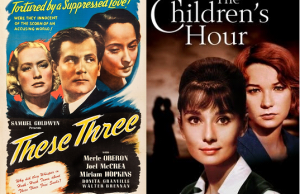
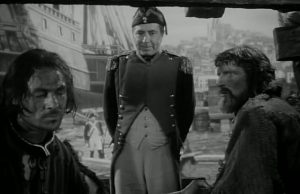
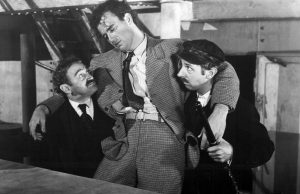






Leave a Reply